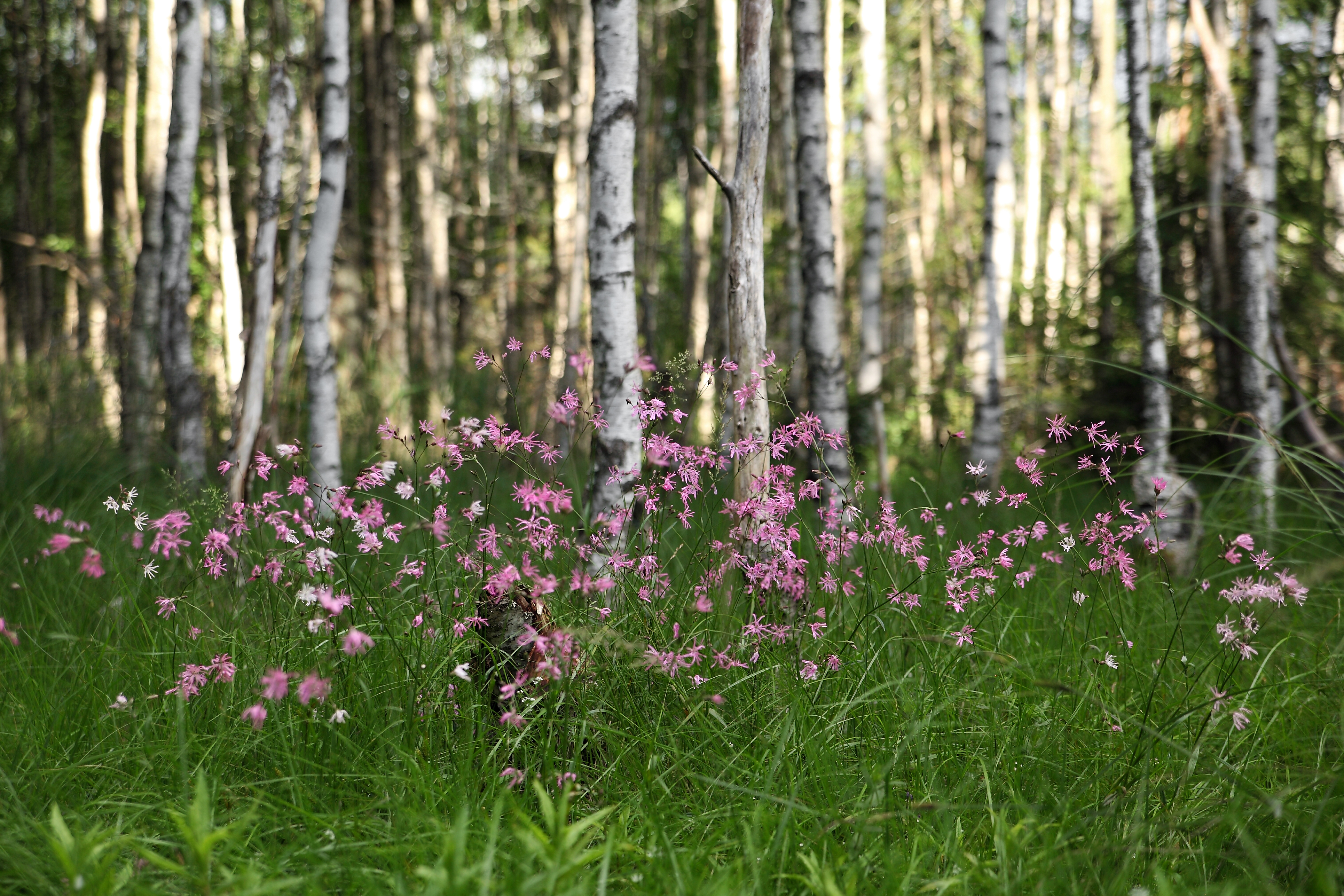Lychnis flos-cuculi on:
[Wikipedia]
[Google]
[Amazon]
''Silene flos-cuculi'' (syn. ''Lychnis flos-cuculi''), commonly called ragged-robin, is a perennial herbaceous plant in the family
 ''Silene flos-cuculi'' forms a rosette of low growing foliage with numerous flower stems 20 to 90 cm tall. The stems rise above the foliage and branch near the top of the stem and end with the pink flowers which are 3–4 cm across. The flowers have five narrow petals deeply divided into four lobes giving the flower an untidy, ragged appearance, hence its common name. The calyx tube is five-toothed with ten stamens. The leaves are paired, with the lower leaves spoon-shaped and stalked. The middle and upper leaves are linear-lanceolate with pointed apexes. All of the leaves are untoothed. The stems have barbed hairs pointing downward and these hairs make the plant rough to the touch. Ragged Robins bloom from May to August, occasionally later, and butterflies and long-tongued bees feed on the flowers' nectar. In addition to these pollinators, the flowers are visited by many types of insects, and can be characterized by a generalized
''Silene flos-cuculi'' forms a rosette of low growing foliage with numerous flower stems 20 to 90 cm tall. The stems rise above the foliage and branch near the top of the stem and end with the pink flowers which are 3–4 cm across. The flowers have five narrow petals deeply divided into four lobes giving the flower an untidy, ragged appearance, hence its common name. The calyx tube is five-toothed with ten stamens. The leaves are paired, with the lower leaves spoon-shaped and stalked. The middle and upper leaves are linear-lanceolate with pointed apexes. All of the leaves are untoothed. The stems have barbed hairs pointing downward and these hairs make the plant rough to the touch. Ragged Robins bloom from May to August, occasionally later, and butterflies and long-tongued bees feed on the flowers' nectar. In addition to these pollinators, the flowers are visited by many types of insects, and can be characterized by a generalized
Caryophyllaceae
Caryophyllaceae, commonly called the pink family or carnation family, is a family of flowering plants. It is included in the dicotyledon order Caryophyllales in the APG III system, alongside 33 other families, including Amaranthaceae, Cactacea ...
. This species is native to Europe and Asia, where it is found along roads and in wet meadows and pastures. In Britain
Britain most often refers to:
* The United Kingdom, a sovereign state in Europe comprising the island of Great Britain, the north-eastern part of the island of Ireland and many smaller islands
* Great Britain, the largest island in the United King ...
it has declined in numbers because of modern farming techniques and draining of wet-lands and is no longer common. However, it has become naturalized in parts of the northern United States and eastern Canada.
Description
pollination syndrome
Pollination syndromes are suites of flower traits that have evolved in response to natural selection imposed by different pollen vectors, which can be abiotic (wind and water) or biotic, such as birds, bees, flies, and so forth through a process c ...
. The fruits consist of small (6–10 mm) capsules opening on top by five teeth and containing many small seeds, they are found on the plants from August onwards.
Cultivation
Popular gardencultivar
A cultivar is a type of cultivated plant that people have selected for desired traits and when propagated retain those traits. Methods used to propagate cultivars include: division, root and stem cuttings, offsets, grafting, tissue culture ...
s include:
*'Alba' – white-flowered form
*='Lychjen'
*'Nana' – dwarf form (4 inches) with smaller leaf rosettes and shorter flower stems
*'Petite Jenny'
*'White Robin'
References
flos-cuculi Flora of Europe Flora of Asia Plants described in 1753 Taxa named by Carl Linnaeus {{Commons category, Lychnis flos-cuculi